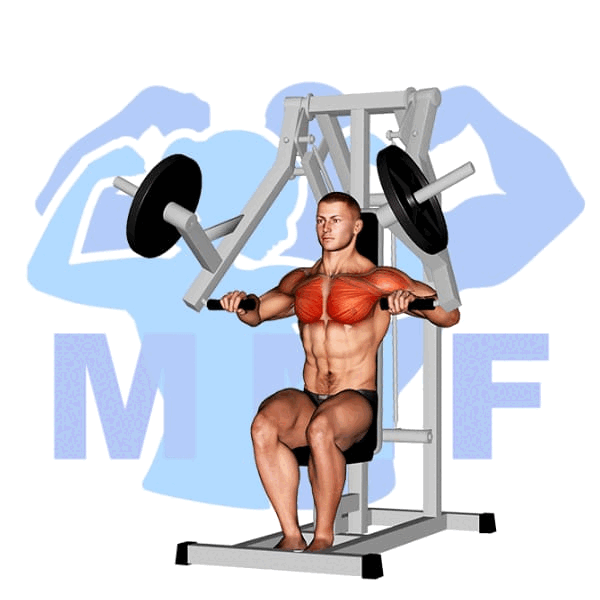In order to continue to get strong, you must cycle through many different exercises. The dumbbell rear lateral raise is a great isolation exercise for you posterior deltoids. Learn how to incorporate it into your training routine.
The difference between the rear lateral raise and the lateral raise is the portion of you deltoid that is used. For the rear lateral raise, your torso is bent forward, this moves the engaged part of your deltoid to the rear of your shoulder, your posterior deltoids. Hence the name rear lateral raise because it works the rear of your shoulders.
Rear Lateral Raise Exercise Summary
- Primary Muscles Worked: Deltoids
- Other Muscles (Secondary) Worked: Infraspinatus, Teres Minor, Lateral, Trapezius, Rhomboids
- Equipment: Dumbbells
- Mechanics Type: Isolation
- Force: Pull
- Utility: Auxiliary
Correct Exercise Procedure
The Setup For Standing Dumbbell Rear Lateral Raise
- To setup grab a dumbbell in each hand, holding them to your side palms facing in.
- Bend your knees and bend over with your hips keeping your back flat and close to parallel with the ground.
- Position elbows with slight bend and palms facing together.
Execution Of Rear Lateral Raises
- Raise your upper arms to your sides until your elbows are shoulder height.
- Maintain upper arms in line with your torso and keep a fixed elbow position of a slight bend between 10° and 30° angle during the exercise.
- Lower the dumbbells back together controlled so they don’t bang into each other and repeat.

Utilized Muscles
Target (Agonist) Muscles
- Deltoids Posterior
Synergist Muscles
- Deltoid, Lateral
- Infraspinatus
- Teres Minor
- Trapezius Middle and Lower
- Rhomboids
Stabilizers Muscles
- Erector Spinae
- Gluteus Maximus
- Hamstrings
- Quadriceps
- Triceps Brachii
- Wrist Extensors
Antagonist Stabilizers
- Pectoralis
How To Perform Dumbbell Rear Lateral Raises Using A Bench
Tips for Better Results and Proper Rear Lateral Raise Form
To achieve the best results use the following tips.
- Perform dynamic shoulder stretch exercises before doing dumbbell rear lateral raises. Check out how to warm up your shoulders here.
- Maintain your elbows above your wrists by raising pinkie finger side of your hand up at the top.
- Pause at the top and don’t let the dumbbells touch each other at the bottom.
- Maintain your core tight and don’t rock the weight to cheat it up.
- To build larger muscles raise and lower the weight slowly at 5 seconds up and 5 seconds down the cadence.
Frequent Mistakes You Want To Avoid To Prevent Injury and Ensure Gains
Performing the dumbbell lateral raises improperly can lead to shoulder injuries or an ineffective exercise. Cheating with any deltoid isolation exercise can easily lead to a shoulder injury. Fortunately, strengthening you deltoids properly with an isolation exercise like the rear lateral raise can help prevent shoulder injuries. So don’t make these mistakes.
- Don’t forget to warm up your shoulder before you start this exercise.
- Don’t perform the movement to fast. This can lead to the weight falling and pulling your deltoid and causing injury.
- Don ‘t use too much weight. Trying to lift to much weight will lead to trying to swing the weight up and can do the same thing as going to fast.
- Don’t pull up with your back. Swinging the weight up with you back can lead to both shoulder and back issues with the rear lateral raise.
- Don’t Lock your elbows. Maintaining a slight bend to your elbows will prevent elbow and shoulder injuries.
If you do find that you have difficulty performing rear lateral raises because of a shoulder injury check out this article.
Variations to Dumbbell Rear Lateral Raise
The following exercises are variations of dumbbell rear lateral raises that work different parts of your deltoids. You should change up your isolation exercises frequently to continue to see gains. These exercises are some excellent variations to keep your muscles confused and developing.
Additional Exercises that Target the Same Muscle Groups
The following exercises can be performed as alternatives to or supersets with dumbbell rear lateral raises. These exercises will also work your shoulders and specifically your deltoids.
Developing Broad and Defined Shoulders With Rear Lateral Raise
You should now have great form and multiple options for working your deltoids. If you are trying to broaden your shoulders you should check out these top shoulder exercises.





